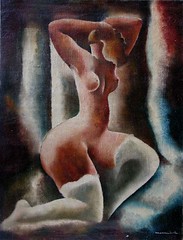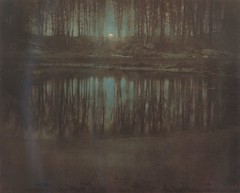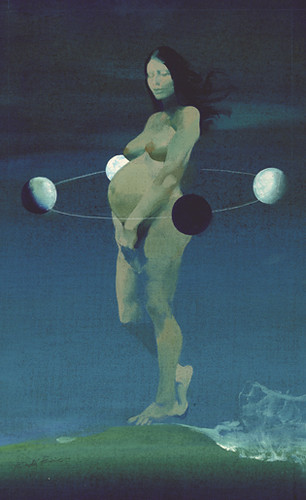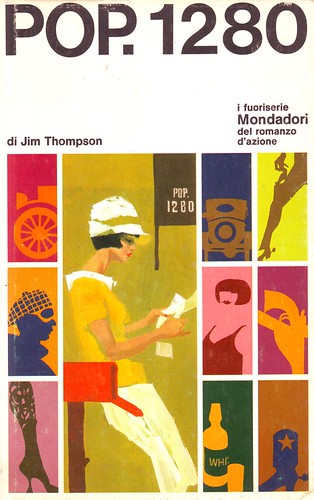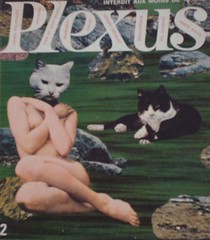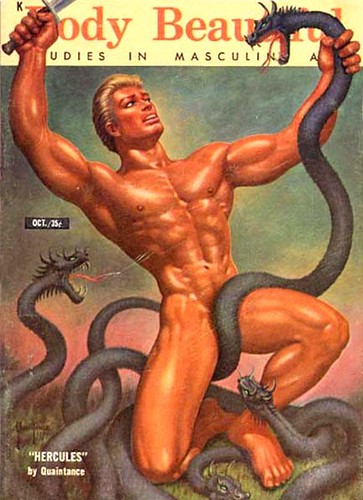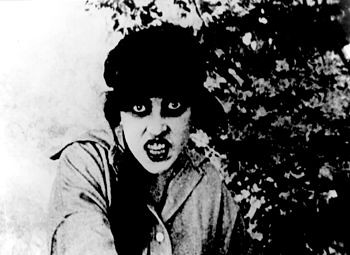
Musidora in Les Vampires (1915)
[Youtube=http://www.youtube.com/watch?v=q_fdUROaJYo&]
Musidora in Les Vampires (1915)
Musidora (February 23, 1889 – December 11, 1957) was the stage name of a popular French silent film actress of the early 20th century. She is best-remembered for her vamp persona in the roles of Irma Vep and Diana Monti in the early motion picture crime serials Les Vampires (1915) and Judex (1916), respectively.

Poster for Les Vampires
Adopting the moniker of Musidora (Greek for “gift of the muses“) and affecting a unique vamp persona that would later be popularized in the United States of America by actress Theda Bara, Musidora soon found a foothold in the nascent medium of moving pictures. With her heavily kohled dark eyes, somewhat sinister make-up, pale skin (see the heroin chic aesthetic) and exotic wardrobes, Musidora quickly became a highly popular and instantly recognizable presence of European cinema.
Beginning in 1915, Musidora began appearing in the hugely successful Feuillade-directed serials Les Vampires as Irma Vep (an anagram of “vampire”), a cabaret singer, opposite Edouard Mathé as crusading journalist, Philippe Guerande. Contrary to the title, the Les Vampires were not actually about vampires, but about a criminal gang cum secret society inspired by the exploits of the real-life Bonnot Gang. The somewhat surreal series was an immediate success with French cinema-goers and ran in ten installments until 1916. After the Les Vampires serial, Musidora starred as ‘Diana Monti’ in another popular Feuillade serial, Judex, filmed in 1916 but delayed for release until 1917 because of the outbreak of World War I. Though not intended to be “avant-garde,” Les Vampires and Judex have been lauded by critics as the birth of avant-garde cinema and cited by such renowned filmmakers as Fritz Lang and Luis Buñuel as being extremely influential in their desire to become directors.
I’ve previously mentioned Les Vampires[1].

